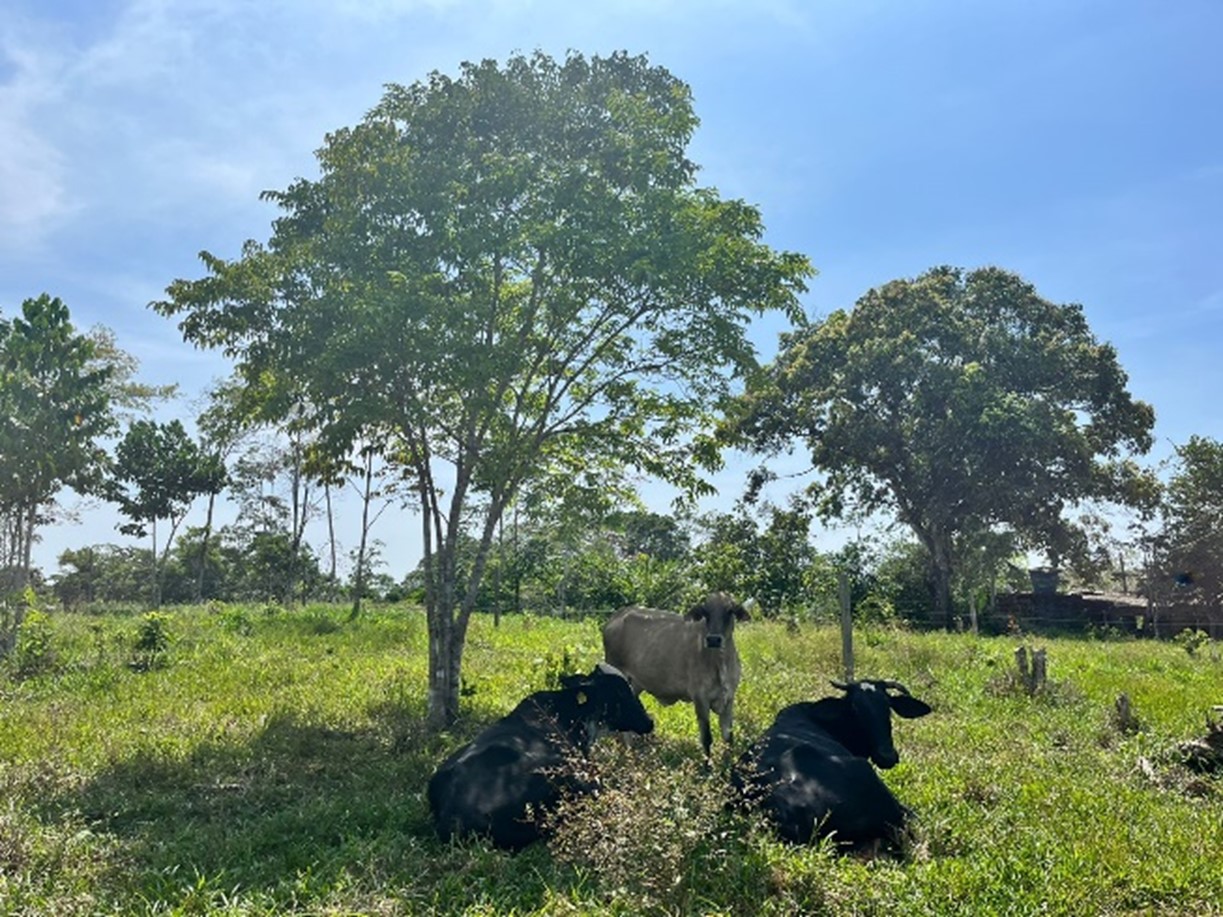Sociotechnical innovations that reduce greenhouse gas emissions for the Amazon
-
From
CGIAR Initiative on Low-Emission Food Systems
-
Published on
29.12.23
- Impact Area

By Neidy Clavijo and Thomas Gómez, Pontificia Universidad Javeriana
In the face of the significant challenge posed by the ecological and social effects of climate change in the Amazon and its agri-food systems, there is high expectation regarding innovations that can be fostered and implemented for adaptation and mitigation. This urgency is also caused by the alarming changes in carbon reserves caused by deforestation in these forests. If this trend continues, the Amazon could become a significant contributor to greenhouse gas emissions. Additionally, rising temperatures, changes in precipitation patterns, and an increase in extreme weather events are expected to cause substantial damage and economic impacts, including biodiversity loss and species extinction in the region.
In the Colombian Amazon, deforestation resulting from extensive livestock farming, cultivation of crops of illicit uses, mining, and selective logging has directly led to a significant decrease in forest cover. This, in turn, has repercussions not only on the local climate but also on the broader planetary ecosystem. Therefore, reducing deforestation in the Amazon and promoting the transition to a low-emission agri-livestock production model would be an opportunity to promote the adaptation of local agri-food systems and make a potential global contribution to mitigating climate change. Thus, advocating for innovation processes that go beyond purely technological solutions generated externally to the territories is a necessary call to address the significant challenge of climate change and its impacts on Amazonian agri-food systems.
To carry out these innovation processes, it is essential to consider that innovation is a form of creation associated with improving individuals’ and communities’ capacity to solve present and future problems. Effective solutions must be identified according to their context, promoting initiatives that share knowledge and offer a scenario of concerted solutions to face problems collectively. Therefore, it is important to recognize that there are other sources of innovation, and some technologies originate from specific ecosystem environments where local actors are crucial for their design, execution, and maintenance. This concept is known as sociotechnical innovations.
In the framework of the initiative “Low-Emission Food Systems” (Mitigate+), a literature review on low-emission sociotechnical innovations carried out in the Amazon was conducted. The review revealed that among the sociotechnical innovations most widely used is the establishment of silvopastoral systems on livestock farms. These systems aim to provide grazing and browsing alternatives for animal feeding, improving not only livestock nutrition but also, depending on the use of forest and shrub species, enhancing the connectivity of productive systems with the main ecological structure of the landscape. This is achieved by creating biological corridors, impacting the surrounding biodiversity and adjacent to the system. Studies compiled in this work demonstrate the intrinsic advantages of these systems, enhancing the livestock’s quality of life, providing conditions for their well-being, influencing their development, and consequently, their production. Simultaneously, these systems capture carbon and improve soil characteristics.}

Another sociotechnical innovation is the installation of tubular biodigesters, providing rural families with clean energy for food preparation and a nutrient-rich source to complement soil fertilization processes. These benefits include a reduction in external fuel costs for cooking, as well as improvements in productive systems due to the use of high-quality organic fertilizers.
The establishment of agroforestry systems is another case, corresponding to traditional agriculture practices in the Amazon (chagras). These systems combine different trees, shrubs, and crop species to provide various benefits to farming families, such as shade, food, improved soil conditions, biodiversity conservation, water sources, and efficient use of solar radiation. Agroforestry systems are the most extensively studied and recommended innovation for mitigating greenhouse gas production in the Amazon. Their establishment, in the medium and long term, ensures sustainability in food provision and increased system productivity. Depending on each farm’s needs, the species incorporated into the design can vary, and agreements must be reached with each farming family to establish a management, monitoring, and utilization plan for each layer.
Finally, as a sociotechnical innovation taking place in the Amazon, the promotion of agroecological practices is another strategy used by the amazon agri-food systems, which focus on conserving and improving soil fertility using organic fertilizers, crop diversification, including areas above the ground that align with agroforestry systems, and species rotation over time and space. In these practices, internal inputs, nutrient cycling, family labor, and local knowledge are fundamental to redesigning the production system, the main expression of the agroecological approach.
This blog has been written based on the work carried out on the frame of the WP3 of the One CGIAR initiative Low-Emission Food Systems. See more information on the CGIAR Initiative on Low-Emission Food Systems.
Related news
-

Integrating Climate Security into the Future of UN Peacekeeping in Africa
Ibukun Taiwo30.06.25-
Climate adaptation & mitigation
Explicit mentions of climate security have been removed or weakened in recent UN mandates. For…
Read more -
-

Harnessing digital tools in securing soil health for Africa’s food future
Sehlule Muzata27.06.25-
Climate adaptation & mitigation
-
Environmental health
-
Nutrition, health & food security
-
Poverty reduction, livelihoods & jobs
Nairobi, 27 June 2025 (IITA) - As it marks its first anniversary, the Regional Hub…
Read more -
-

Driving Rwanda’s Agricultural Sector Climate Resilience Through Innovative Business
The Alliance of Bioversity International and the International Center for Tropical Agriculture (CIAT)27.06.25-
Climate adaptation & mitigation
Rwanda’s agriculture is integral to its economy, and its reliance on rain-fed farming systems make…
Read more -
